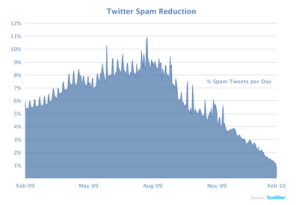After 23 years, I’ve finally developed a morning routine. Sure I’m only four weeks in, but that’s more than I can say for any other routine I’ve attempted in my lifetime. I wake up, let the dog out, eat two egg whites and two pieces of 35 calorie multi-grain toast (or a mushroom and spinach omelet if I’m really ambitious), allow Tony Horton to guide me in P90X, shower, let the dog out again, go to campus, spend 30 minutes reading my RSS feeds.
A week ago, as I scrolled through my Deadspin feed, I noticed I missed an article from January 16 titled “Report: Many Dallas Athletes Run Shoddy Charities”. To some, this wouldn’t really stand out. As a person who constantly evaluates the image boosters and blunders in the sports world, I found it quite alarming.
Apparently, the Dallas Morning News reviewed tax records of 22 Dallas sports-sponsored non-profits. While some passed as legitimate, most represented a series of shortcomings that sparked a two-part expose of these athletes’ shady behavior. Some spent more money on overhead costs than charity. Some collected money but never put the full amount toward its intended use. And others left contributions sitting dormant for years.
We all know the sad but true fact that corruption runs rampant in business, and sports is not exempt. It is also a fact that Dallas has a reputation for being a dirty sports town. Much of this was brought to life in ESPN’s final 30 for 30 film, Pony Excess, a play-by-play account of Southern Methodist Univeristy’s football scandal in the 198os. Coincidentally, SMU was also exposed by the Dallas Morning News. In any sense of a scam, it’s one thing to lie about it, but to think the lie will go unnoticed is absolutely mind boggling.
So what happened?
A detailed run-down is present the original article, but here is a quick picture:
• Terence Newman, a Cowboys cornerback, created Newman’s Rising Stars Foundation. Every penny is supposed go toward scholarships for standout student-athletes in the Dallas Independent School District. However, the foundation paid a percentage of donation dollars to Icon Sports & Entertainment, a company that converts good deeds and good publicity into endorsement opportunities.

Newman with his rising stars (photo from the website)
• Former Dallas Maverick Josh Howard uses almost half the contributions to the Howard Foundation on employee salaries, including his best friend’s. Howard said, “I take that as me being charitable.” Howard was eventually released from the Mavericks around this time last year because of a series of poor PR decisions. He now plays for the Washington Wizards.
• Former Cowboys quarterback, Troy Aikman, created the Troy Aikman Foundation in 1992 to raise money for “poor, sick and suffering children.” In 2008, the foundation reported $1.6 million in reserves, yet only $70,000 has been allocated. Aikman said his charity earmarks funds for future hospital playrooms but has no immediate plans to spend the money.

Aikman interacting with children in one of the few playrooms created by his foundation (Website photo)
This practice isn’t exactly shocking when it comes to traditional business, but sports is supposed to be different. Children don’t look at CEO’s and say they want to grow up to sit behind a desk in the top-floor office of a high rise building surrounded by leather bound books that smell of rich mahogany. Instead, they idolize the Troy Aikman’s and the Josh Howard’s. They beg their parents for athlete-endorsed products. And their parents donate to athlete-sponsored charities.
How to tell if a charity is worthwhile
Non-profits are overlooked as being corrupt because we believe they are bettering the world. We see the coin jars for cancer at check-out counters. We watch the commercials urging us to do our part and stop animal abuse. We march in the breast cancer walks and purchase more pink in October. Yet, do we ever question how much of our money actually goes to the kid pictured on the coin jar who’s been battling leukemia for three years? If we do, it’s only when corruption stories such as this one surface, and we’ll probably keep it to ourselves to minimize accusations about our cold-hearted personalities
With athlete-supported non-profits, we feel we have a connection with these superstars, so donating to their charities is a sure-fire confidence booster and a bigger tax write-off. I’m not trying to discount what non-profits are trying to achieve, because most of them do accomplish more for society than any of us could imagine. We just need to do a better job at choosing charities wisely. In 2007, The Seattle Times broke down athlete-sponsored charities, basically telling readers exactly what to look for on public tax forms so they don’t buy into a scam. Such steps include:
- Distinguishing between private foundations and public charities
- Finding the size of the charity
- Comparing Basic ratios
- Knowing what you can’t see
- Taking further precautions outside of the IRS
The thin line between publicity and philanthropy
Whether it’s one’s own foundation or a non-profit represented by a series of sports stars, it is difficult to find a pro-athlete that doesn’t identify with some sort of charitable cause. It is almost an unwritten rule that once an athlete enters the big leagues, he or she needs to find a cause to promote or else they are considered cold or uncommitted to the community. According to part two of the expose, agents are ready to sell their clients’ images as soon as they sign their professional contracts. Q scores are typically used in marketing to measure a brand’s familiarity and popularity.
In sports, the athlete is the brand.
In the article, Ivan Blumberg, a lawyer and 20-year sports-marketing veteran, said “Is it good public relations for a high-profile athlete to be perceived giving back to their community? Yes. Is the best way to do that by forming a foundation? Probably not. If you’re creating a foundation for the reasons of positively impacting your image, and thus positively impacting your ability to secure marketing deals, then you’ve sort of missed what should be the prevailing objective, which is to do good.”
So why do so many get involved?
Some say it just feels like the right thing to do or feel pressure from family and friends to give back to their roots. Some think of it as a business move that will lead to opportunities that can’t be given to them by talent alone. Whatever the reason, going into philanthropic work without full knowledge of the commitment to the cause can pose more harm to the charity than good. Not to mention the blow to the athlete’s brand when faulty management and unethical activities are uncovered.
My recommended sixth step to the Seattle Times article is make sure you are able to differentiate charities that athletes are 100 percent passionate about from the ones that are 100 percent publicity ploys. As a budding PR professional, I feel that taking on a cause is an excellent PR move, but ONLY if it’s something the athlete can manage and put their heart and soul into. Saying you want to make state of the art playrooms for sick kids is one thing. Actually making these rooms come alive is what makes the charity a blessing to those in need of its resources and enhances the relationship between the athlete and the community.
















